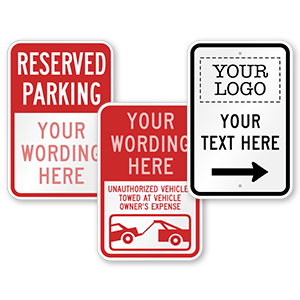AED Signs – Usefulness at Workplaces
Imagine your colleague collapsing on the office floor, and you can’t bring help to him on time because you don’t know where the AED is placed in the huge office building?
According to OSHA, approximately 890 deaths happen outside hospital every day due to heart attack. These deaths are a result of sudden cardiac arrest. As many as 60% of the sufferers can be saved if AED was used immediately. Chances of survival decrease by 7 – 10 % with passing of every minute if not defibrillated. A report by OSHA states that from the total of 6339, 13% fatalities were spotted at work place in 1999 – 2000. Often, work factors intensify the cardiovascular diseases due to existence of carbon monoxide, carbon disulfide, halogenated hydrocarbons, smoke, extreme heat or cold and stress.
High rate of cardiac incidences due to external factors has made the presence of Automated External Defibrillators (AEDs) a widespread feat in workplaces and public areas. When heart attack strikes, every single second counts. It can lead to irrevocable brain damage or even death. AED is an electronic device that diagnoses the cardiac arrest, it is used to treat the person and it allows the heart to bring back in the rhythm.
AED signs identify the locations of AED equipment and first aid. AED signs serve to give people an immediate awareness of the location of these devices. Having an AED sign displayed on the wall of your workplace directly above the location of the AED machine provides a daily reminder that there is a life saving device ready to be used in case of a sudden cardiac arrest. AED First Aid Signs provide information on first aid arrangements required in the workplace.
AEDs are a significant life saving technology and have a major role to play in saving a person’s life who suffered a cardiac attack. Employees who work in confined places are more exposed to serious hazards. AED signs are extremely significant to access and administer emergency first aid.
It is not difficult to use an AED machine. After calling for or asking someone to call for the ambulance, these instructions can be followed to provide first aid with AED machine in case of cardiac failure.
- Position the victim on his back.
- Tilt the head back and lift the chin. Check for breathing for not more than 10 seconds.
- Till the machine is not ready, perform CPR.
- CPR will consist of thirty compressions that are 1 and ½ to 2 inches deep. It has to be followed by two rescue breaths.
- Make sure the surroundings are safe when AED machine arrives.
- Tell all people to stand back.
- Follow the instructions on the AED machine. Place one pad on the upper right side of the chest and one on the lower left side.
- Make sure no one is touching the victim so the AED can analyze correctly.
- AED machine will diagnose the heart rhythm and will let know if shock is required or not. Shock is applied only in the case the victim has no pulse; it is notified by the machine.
- Machine will advise to continue CPR until another shock is issued.
- Pay attention to what machine commands, sometimes only one shock is required.
- Follow the instructions given by AED machine till an ambulance arrives.











